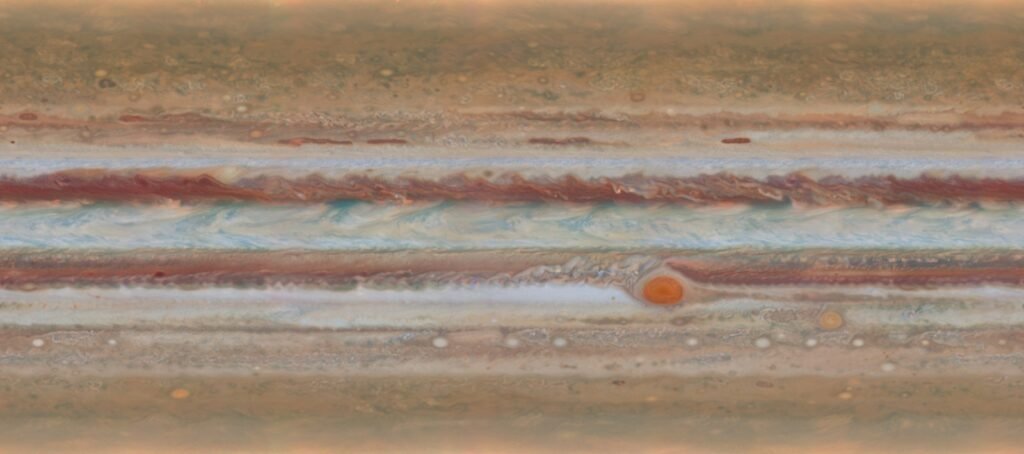For more than three centuries, astronomers have watched a bruised, blood-red oval sliding across Jupiter’s face, a storm so huge it could once swallow Earth whole. Yet for all our telescopes, probes, and computer models, Jupiter’s Great Red Spot remains an unsolved riddle written in wind and color. Why has this storm lasted so long, when hurricanes on Earth burn out in days? And why, in recent decades, has this cosmic icon been shrinking, changing, and even fading? The story of the Great Red Spot is not just about one giant storm; it is a window into how planets work, how atmospheres live and die, and how much of our own solar system still refuses to yield its secrets.
The Storm That Refuses to Die

On Earth, even the strongest hurricanes are brief visitors, tearing across oceans and coasts before collapsing as their energy source runs dry. Jupiter’s Great Red Spot, by contrast, has raged for at least a few hundred years, and possibly much longer, making it the ultimate record-breaking storm. This swirling anticyclone churns in Jupiter’s southern hemisphere, trapped between fast-moving jet streams that help keep it corralled and spinning. Instead of feeding on warm water like terrestrial hurricanes, it draws energy from deep within Jupiter’s atmosphere and from the powerful wind shear around it. The result is a storm that behaves less like a weather system and more like a semi-stable machine built out of gas and motion.
Through telescopes in the late seventeen hundreds and eighteen hundreds, observers repeatedly sketched a large, reddish oval, though records are patchy enough that scientists still argue about the exact start date of the storm. What is clear is that by the late eighteen hundreds, the Great Red Spot was enormous, approximately two to three times the diameter of Earth and visually unmistakable. Today, spacecraft like NASA’s Juno fly past and over it, taking close-up images that reveal a complex, layered structure of high-altitude hazes and deeply rooted vortices. In those images, the storm looks almost like a fossil preserved in motion, a relic of earlier atmospheric conditions still stubbornly spinning on. Standing beneath it, if you could, would feel like standing under a sky made of flowing marble.
The Hidden Physics Behind a Planet-Sized Vortex
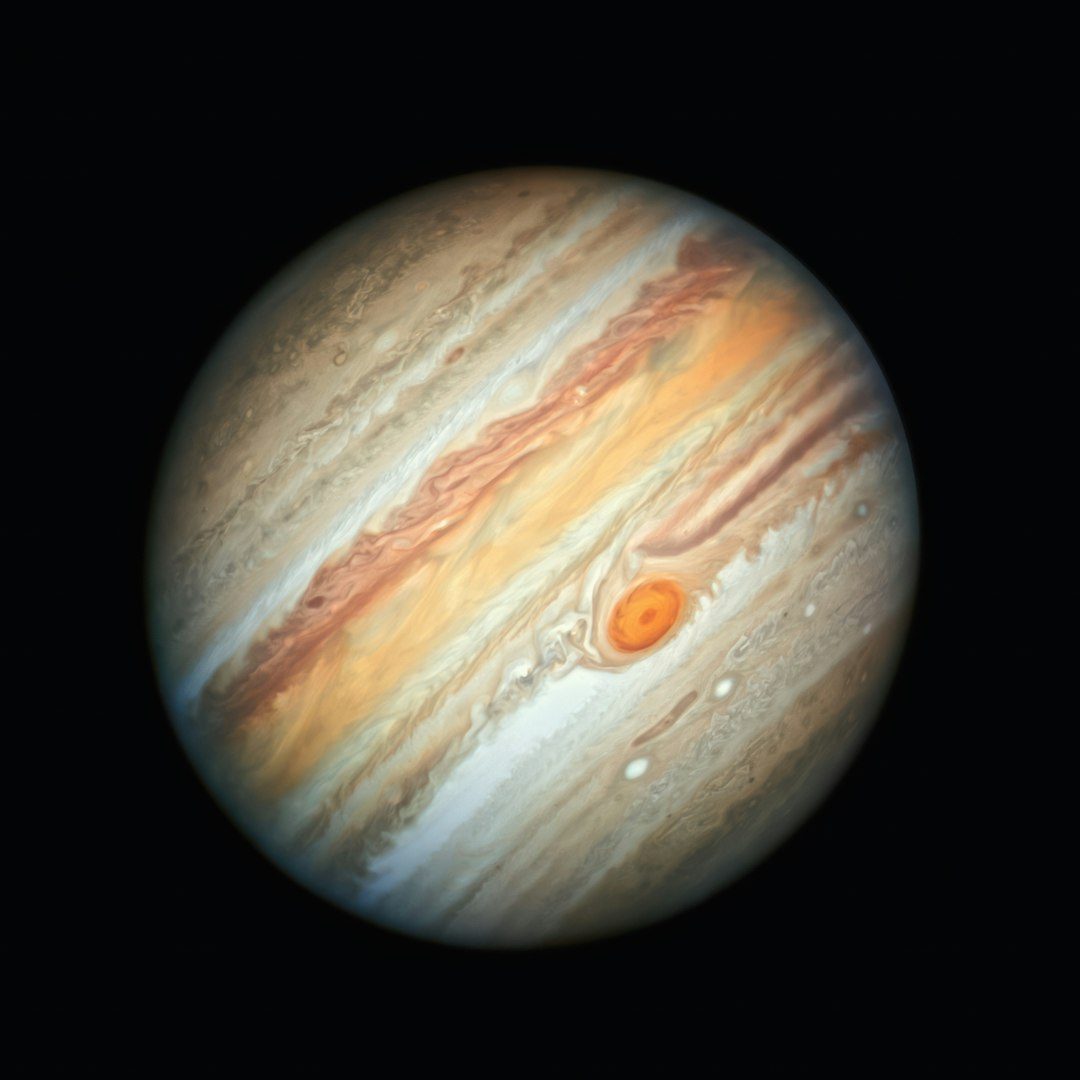
At its core, the Great Red Spot is an anticyclonic vortex, which means high pressure at the center and winds that spiral outward and counter to Jupiter’s overall rotation. Wind speeds around its perimeter can reach several hundreds of miles per hour, faster than the most extreme hurricanes ever recorded on Earth. Crucially, Jupiter has no solid surface to sap the storm’s strength, so the vortex can extend deep into the atmosphere, possibly hundreds of miles down. Juno’s gravity and microwave measurements suggest that the storm’s roots reach far below the cloud tops, embedding it into the planet’s internal circulation rather like a screw driven into wood. That depth may help explain its longevity, because the storm can tap into energy sources unavailable to shallow, surface-bound weather.
Planetary scientists also invoke a concept known as potential vorticity, a kind of atmospheric “spin budget,” to explain why such a vortex can remain so persistent on a rapidly rotating planet. On Jupiter, the balance between rotation, pressure, and the thickness of atmospheric layers tends to preserve large, coherent whirlpools once they form. The jet streams that flank the Great Red Spot act as invisible guardrails, steering other storms away or forcing them to merge rather than shred the main vortex. Occasionally, smaller storms do collide with the Spot and appear to nibble at its edges, adding new energy but also distorting its shape. The hidden physics here is subtle: this is not a storm in simple equilibrium, but a constantly negotiated truce between chaos and structure.
The Mystery of the Red Color

Oddly enough, for a storm that dominates Jupiter’s appearance, we still do not know exactly why the Great Red Spot is red. The color is almost certainly linked to chemicals in Jupiter’s upper atmosphere that are altered by intense ultraviolet sunlight, but which exact substances are responsible is still debated. Laboratory experiments suggest that common gases on Jupiter, such as ammonia and simple hydrocarbons, can be transformed by radiation into reddish-brown “tholins,” complex organic goos that might coat the tops of clouds. This would mean the Great Red Spot is capped by a thin layer of photochemical smog, with the vivid color merely a surface paint over much more familiar white cloud decks below. In some ways, that makes the storm even more intriguing, like a planet-sized weather system wearing makeup.
There are other clues hidden in its shifting shade. Over the last several decades, observers have watched the storm oscillate from brick red to pale salmon, suggesting that the thickness or composition of that upper haze changes over time. As the storm has shrunk, some astronomers suspect that material is being dredged up from deeper layers differently, altering the chemistry at the top. Jupiter’s other storms and belts sometimes show similar color changes, which hints at a global chemical engine driving all of these variations together. The Great Red Spot might be the most visible laboratory for this process, a signpost telling us when the planet’s atmospheric chemistry is shifting gears. When you zoom in, redness on Jupiter turns out to be a story about sunlight, simple molecules, and time.
From Gigantic to Merely Huge: The Shrinking Spot
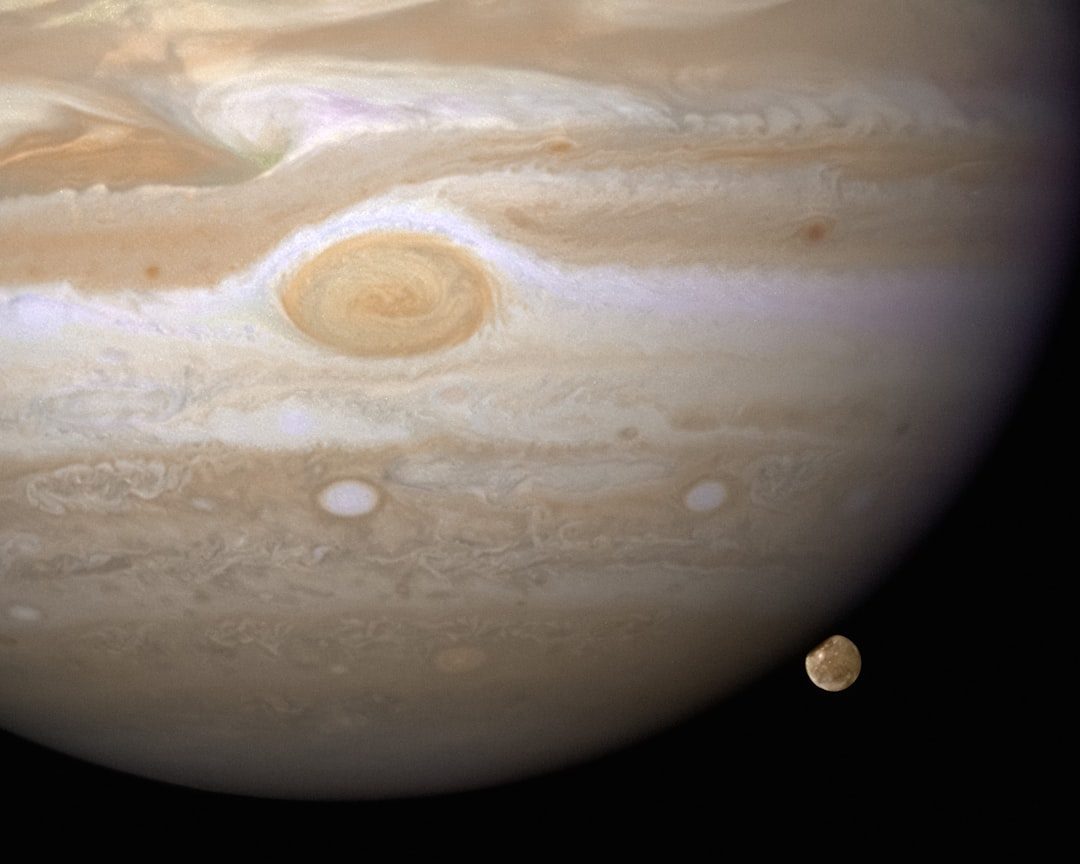
If you compare old drawings and early photographs of Jupiter with recent space telescope images, one change in the Great Red Spot jumps out immediately: it is clearly getting smaller. In the eighteen hundreds, the Spot stretched approximately two to three Earth diameters across; by the late twentieth century, it was closer to just over one Earth diameter, and in the twenty-first century it has narrowed even further. High-resolution images from the Hubble Space Telescope and modern observatories have documented this shrinkage with uncomfortable precision. The storm is gradually becoming more circular, less of an elongated oval, and some fine streamers of gas have started to peel away from its edges. It is a bit like watching a once-sprawling hurricane tighten into a more compact, intense core.
Scientists are still wrestling with what this means for the storm’s future. One possibility is that the Great Red Spot is simply evolving toward a new, smaller but more stable configuration, a kind of middle age for a planetary vortex. Another is that we are witnessing a slow decay, with the storm losing energy as it exchanges momentum with surrounding jets and colliding eddies. Measurements of its wind speeds suggest that while its diameter is shrinking, some winds near the core may actually be speeding up, adding another twist to the story. In other words, the storm may be slimming down but working harder, burning through its internal energy reserves. For now, no one can say whether this is the beginning of the end or just another chapter in a very long life.
The Great Red Spot as a Natural Wind Tunnel

What makes the Great Red Spot scientifically priceless is not just its drama, but the way it turns Jupiter into a kind of grand-scale laboratory for fluid dynamics. Physicists and climate scientists use the storm almost like an experimental setup, testing models that also apply to oceans and atmospheres here on Earth. The same equations that describe the spinning of the Great Red Spot can help explain the formation of ocean eddies, jet stream meanders, and even long-lived polar vortices over our own poles. When researchers tweak their models to match the details of the Spot’s winds and temperature structure, they gain confidence that the same tools can capture other complex flows. In that sense, every new close-up from Juno or Hubble becomes both a planetary postcard and a set of experimental data.
For a long time, atmospheric science was dominated by what we could measure locally: weather balloons, aircraft, and ground stations. Now, planetary storms like the Great Red Spot serve as crucial reality checks on global climate models that have to work across many scales and worlds. Whenever a model can reproduce the Spot’s longevity, its shape, and its interaction with surrounding jets, that model has passed a serious stress test. And that matters because those same models are used to understand long-term trends in Earth’s climate and potential climates on exoplanets. This one alien storm is thus strangely entangled with our attempts to forecast our own future weather and habitability. Studying Jupiter’s chaos helps us put boundaries on our own.
Why This Giant Storm Matters for Us
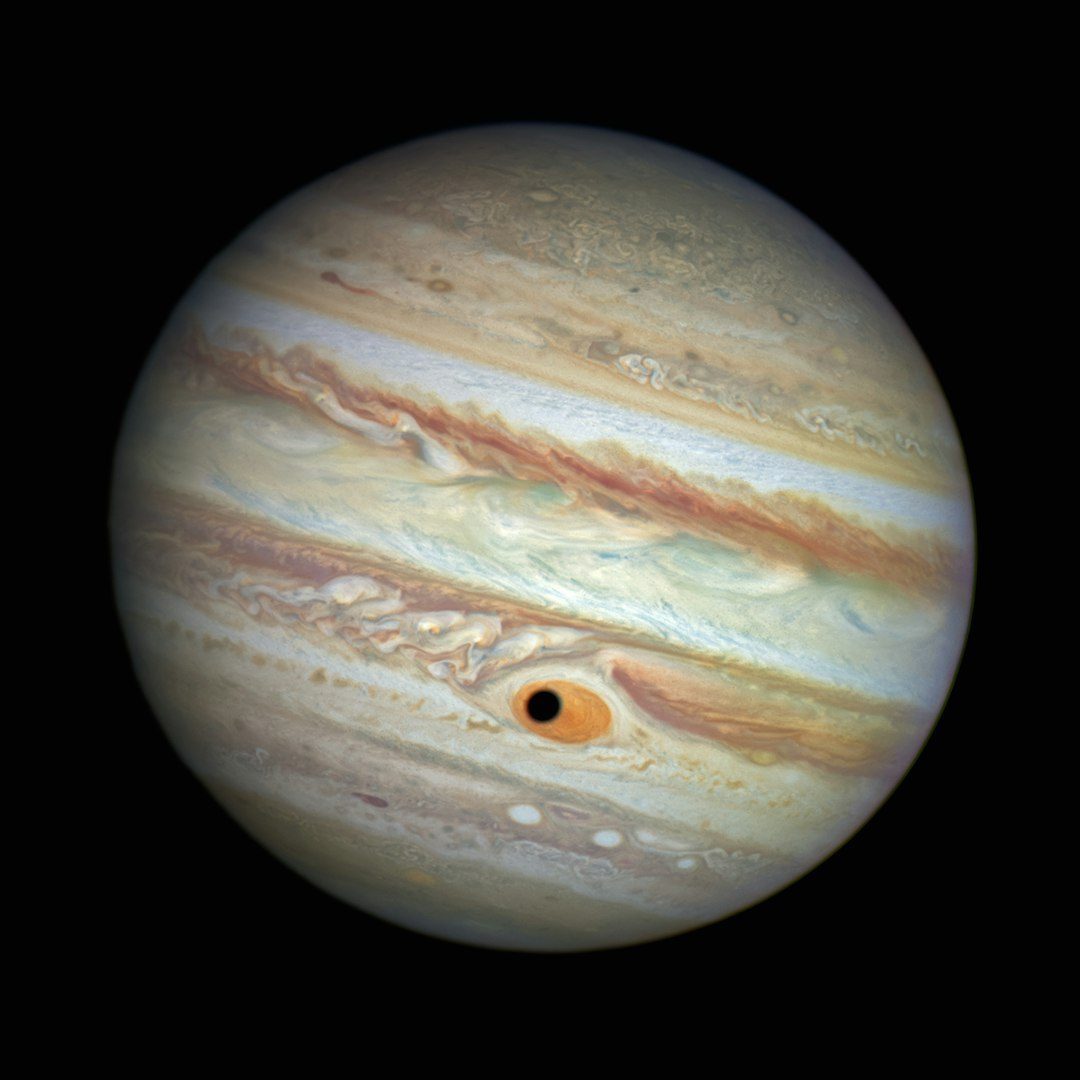
At first glance, it might seem that a distant, Jovian tempest has little to do with everyday life on Earth, yet the connection is deeper than it looks. The Great Red Spot is a living example of how atmospheres can settle into long-lasting patterns, resisting change even as energy constantly flows through them. On Earth, our jet streams, ocean currents, and climate zones also show this kind of stubborn persistence, and they, too, can shift or destabilize under the right pressures. When scientists figure out what keeps the Spot going and what might finally disrupt it, they are also learning about the invisible tipping points that could rearrange our own weather systems. In a time when humans are adding energy to the climate by pumping greenhouse gases into the air, this kind of insight is not just academic.
There is also a broader, almost philosophical importance to understanding storms like this. Planetary science reminds us that climate is not a fixed backdrop but a dynamic, emergent phenomenon shaped by physics, chemistry, and time. The Great Red Spot is a vivid symbol of that, a storm older than modern science, outlasting generations of observers who tried to make sense of it. Its very existence challenges our sense of normal scale and duration, stretching our imagination beyond seasons and centuries. When you realize that an atmosphere can sustain such a structure for so long, it becomes easier to appreciate how fragile and unusual Earth’s own mild conditions really are. This swirling red eye on Jupiter is, in a strange way, a mirror that reflects our own questions back at us.
New Eyes on an Old Storm
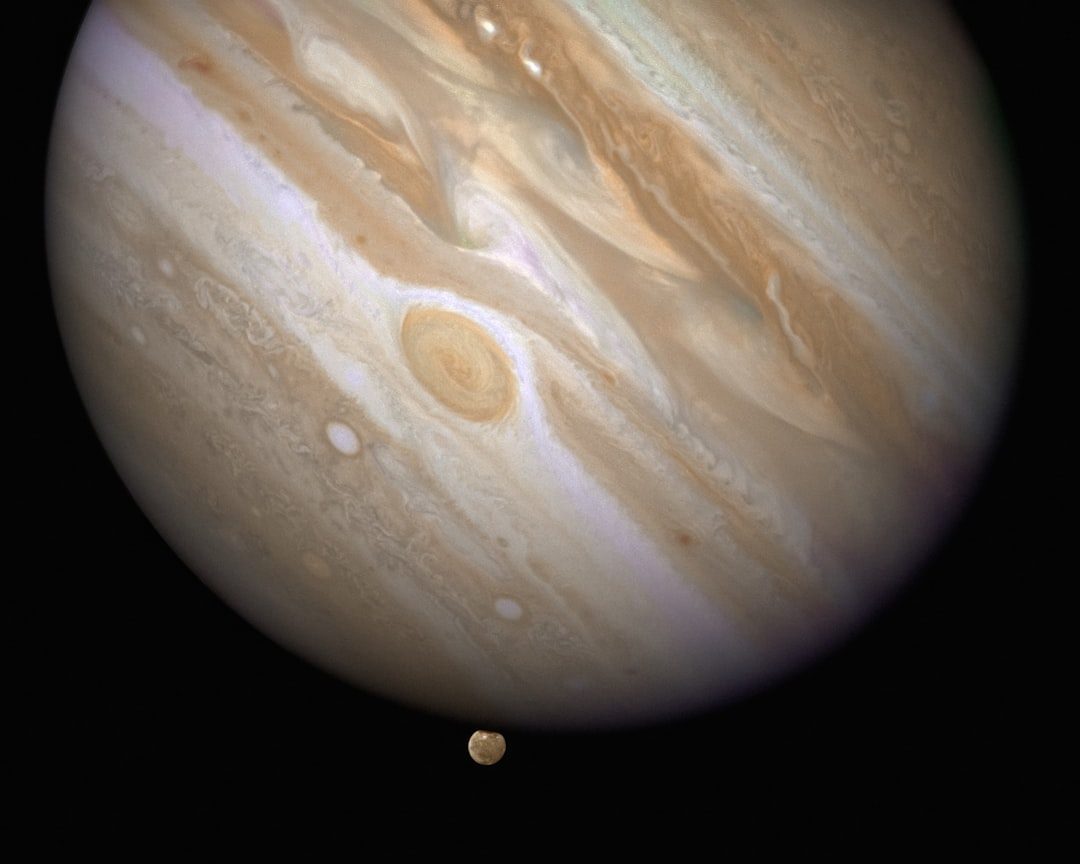
The current golden age of Jupiter exploration has radically sharpened our view of the Great Red Spot, turning it from a blurry oval into a richly detailed world of its own. NASA’s Juno spacecraft, in orbit since 2016, has repeatedly flown close to the storm, measuring variations in gravity, magnetic fields, and microwave emissions as it passes overhead. These data reveal how far down the storm extends and how its internal structure differs from surrounding regions. Combined with regular monitoring by the Hubble Space Telescope and large ground-based observatories, scientists now track the storm almost like meteorologists track a hurricane. They can watch small changes in shape and color from year to year, stacking up a time-lapse movie of a storm in slow motion.
This multi-instrument approach has yielded some surprises. For example, microwaves sensitive to ammonia distribution show that the atmosphere under and around the Spot is laced with complex upwellings and downwellings, not just a single smooth vortex. Infrared observations reveal hotspots and cooler regions that hint at powerful vertical motions hidden beneath the visible clouds. Meanwhile, amateur astronomers contribute by capturing high-resolution images during favorable apparitions, helping to time sudden events like flares of color or peel-off of streamers. The Great Red Spot has quietly become one of the most closely watched meteorological features anywhere in the solar system. With every pass and every new wavelength, the storm gives up a little more of its story, while still keeping some crucial chapters closed.
Jupiter’s Storms and the Future of Planetary Weather Science
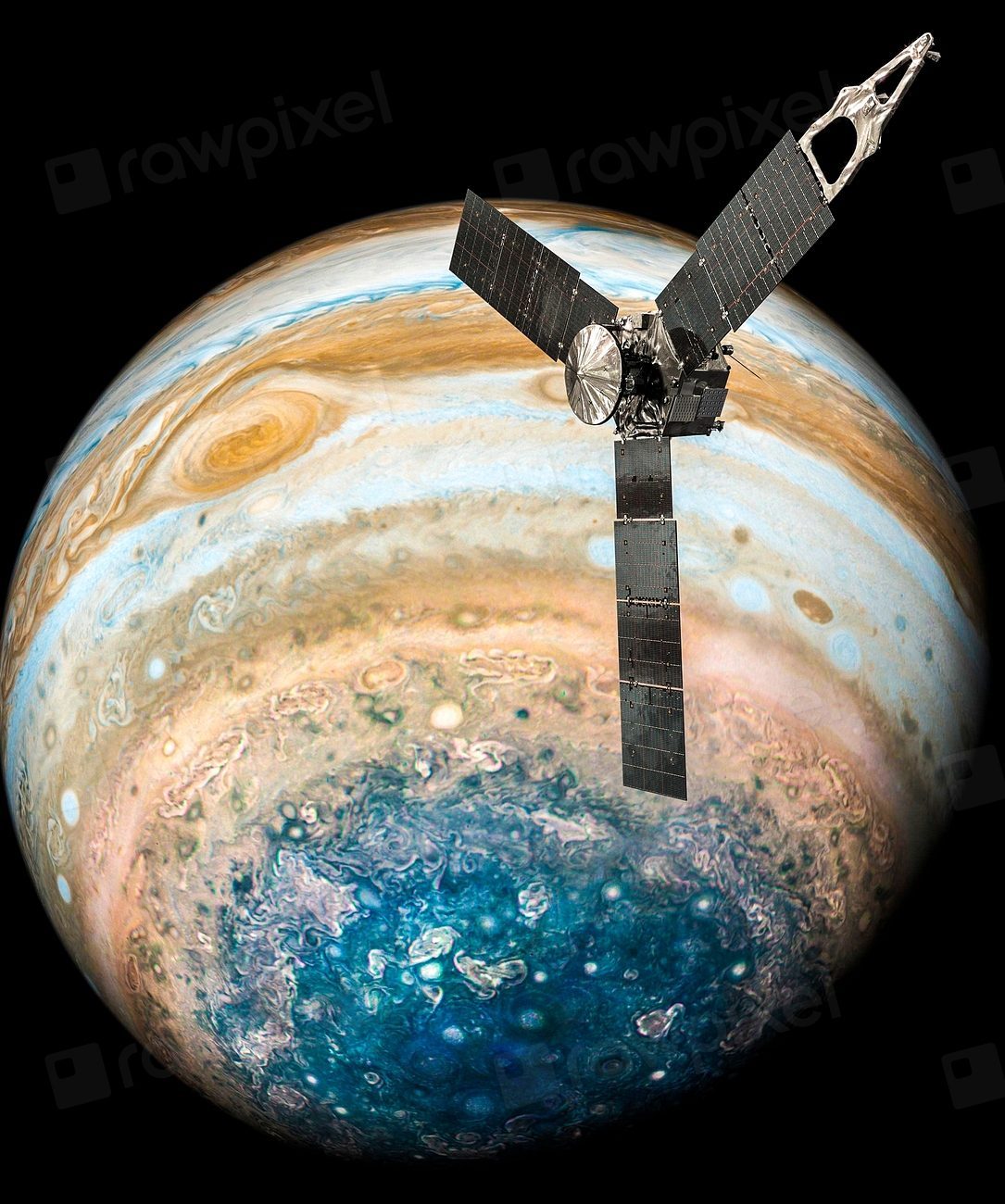
Looking ahead, scientists are already planning the next generation of observations that will probe the Great Red Spot and its cousins with even finer detail. Future spacecraft concepts include orbiters that could skim lower into Jupiter’s atmosphere, as well as probes that might briefly plunge through the cloud layers nearby to sample gases directly. At the same time, giant new telescopes on Earth and in space will be able to resolve smaller structures in and around the storm, tracking changes on timescales of days rather than months. These efforts will be paired with ever more powerful supercomputer simulations that try to reproduce the storm from the bottom up, starting with basic physics and building up to a full-blown, long-lived vortex. If those models succeed, they will be a milestone for planetary weather science.
The implications go beyond Jupiter. Many giant exoplanets discovered around other stars are likely to have fierce, long-lasting storms of their own, some possibly hot enough to vaporize rock. Insights from the Great Red Spot will help researchers interpret the faint, flickering signals we get from those distant worlds, turning light curves into weather maps and color variations into chemical clues. In a sense, every advance in understanding Jupiter’s atmosphere is a rehearsal for reading the climates of planets we may never visit. As technology improves, we might even watch exoplanet storms evolve over years, comparing their behavior with Jupiter’s iconic vortex. The Great Red Spot thus becomes a kind of Rosetta stone for planetary weather, teaching us how to decode tempests we can only see as tiny, changing points of light.
How You Can Stay Connected to This Alien Storm
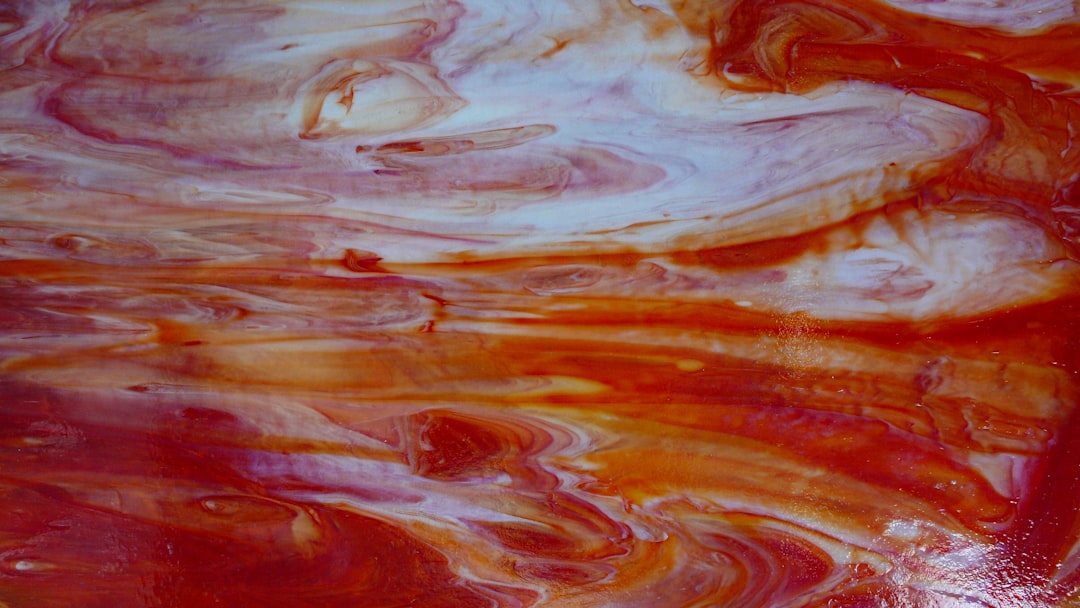
Even though Jupiter hangs far beyond the reach of any casual visit, there are surprisingly tangible ways to stay connected to the story of its greatest storm. Many public observatories and astronomy clubs host viewing nights when Jupiter is high in the sky, and with a modest backyard telescope under good conditions, you can sometimes glimpse the Great Red Spot yourself as a tiny, oval blemish on the planet’s disk. Space agencies and research teams regularly release processed images and animations online, turning raw spacecraft data into accessible visuals that anyone can explore. Following these releases can turn the slow evolution of the storm into a kind of ongoing narrative, one that you check in on from time to time like an old, distant friend.
If you are inclined to go a bit deeper, supporting organizations that promote planetary exploration and public science communication is a direct way to contribute. Funding for missions like Juno and its successors, as well as for telescopes that monitor Jupiter, ultimately depends on public interest and awareness. Learning more about how climate works across different worlds also feeds into more informed conversations about our own planet’s future. You do not need to be a specialist to appreciate that understanding a huge red storm on a distant gas giant can sharpen our perspective on weather, stability, and change closer to home. Next time you see an image of Jupiter, you might find yourself wondering not just how the Great Red Spot looks, but what it can still teach us.

Suhail Ahmed is a passionate digital professional and nature enthusiast with over 8 years of experience in content strategy, SEO, web development, and digital operations. Alongside his freelance journey, Suhail actively contributes to nature and wildlife platforms like Discover Wildlife, where he channels his curiosity for the planet into engaging, educational storytelling.
With a strong background in managing digital ecosystems — from ecommerce stores and WordPress websites to social media and automation — Suhail merges technical precision with creative insight. His content reflects a rare balance: SEO-friendly yet deeply human, data-informed yet emotionally resonant.
Driven by a love for discovery and storytelling, Suhail believes in using digital platforms to amplify causes that matter — especially those protecting Earth’s biodiversity and inspiring sustainable living. Whether he’s managing online projects or crafting wildlife content, his goal remains the same: to inform, inspire, and leave a positive digital footprint.

